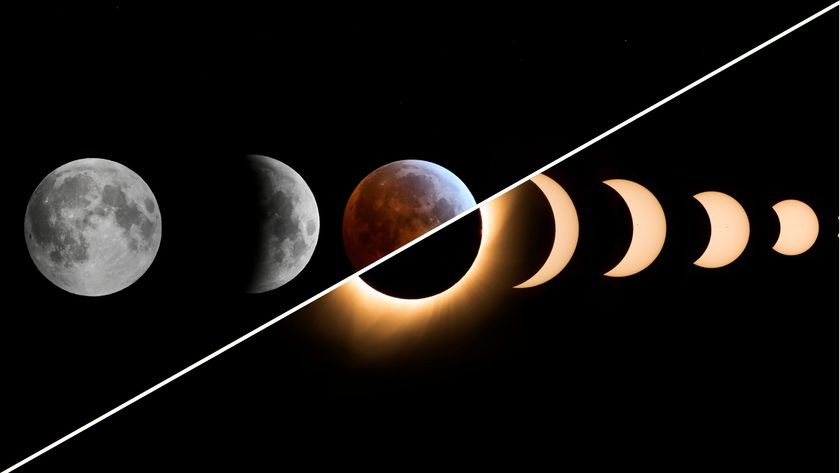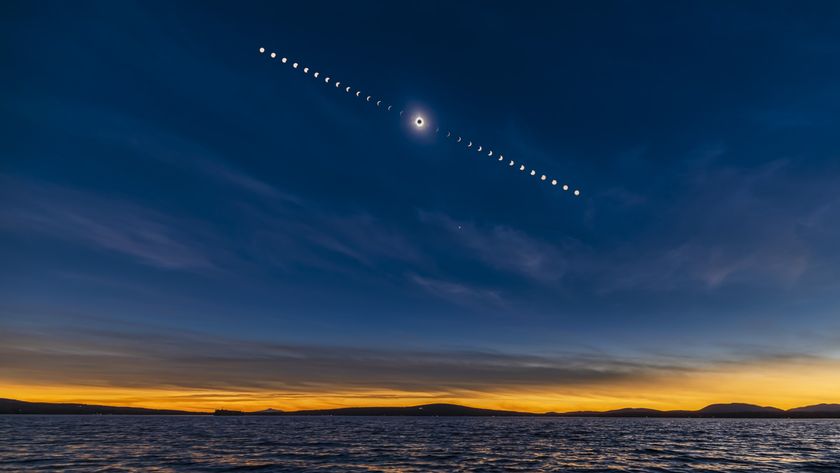Polaris: How to find the North Star
Why is Polaris called the North Star and how is it used?
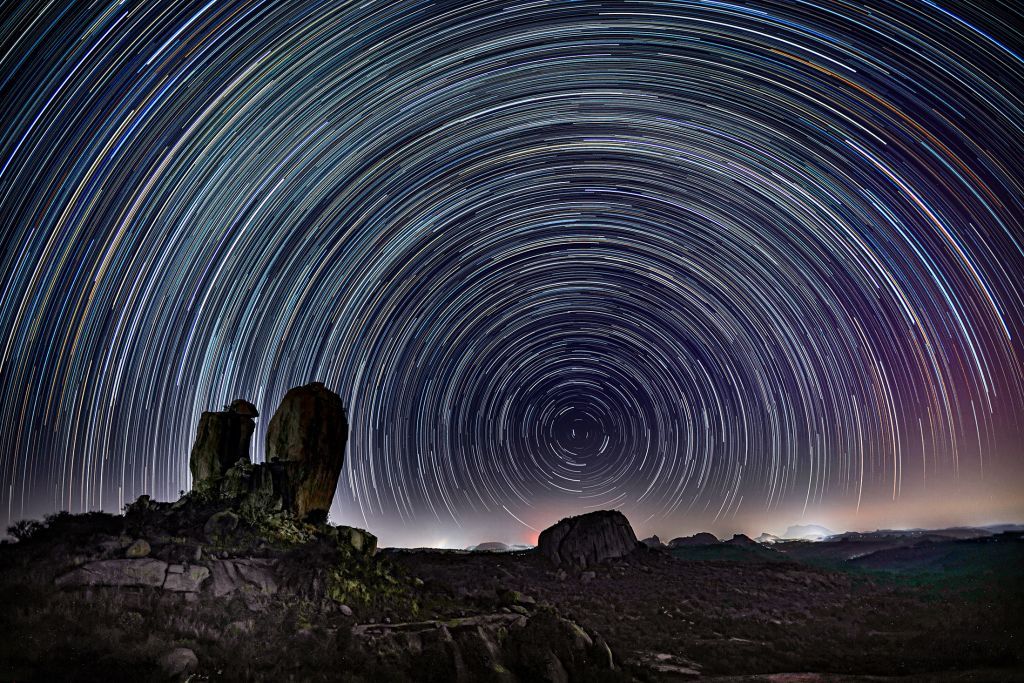
Polaris or the North Star is a star that appears almost directly above the Earth's rotational axis. As the Earth turns, every other star seems to spin around the axis, tracing out a circle in the sky, but the North Star appears to stand still. But no matter what time of night or what season it is, following Polaris will lead a traveler in the Northern Hemisphere due north.
Polaris is part of the constellation known as Ursa Minor and the cluster of stars called the Little Dipper.
The North Star is not the star closest to us, nor is it the brightest star in the night sky. But culturally, scientifically and navigationally, it's one of the most important stars of recent centuries.
What is Polaris?
Polaris is a "pulsing" star, a type of star also known as a Cepheid variable, which means that it appears to vary in brightness ever so slightly — only one tenth of a magnitude — over a time frame of just under four days.
Although we call Polaris a star out of habit, it's actually a system of three stars, with the brightest dubbed Polaris A.
If you train a small backyard telescope on Polaris, you might notice a tiny companion star (called Polaris B) shining at 9th magnitude with a pale bluish tint. This companion was first sighted by William Herschel in 1779, reported astronomer Bob Argyle and co-authors in the 2019 book "An Anthology of Visual Double Stars."
Astronomers believe that the main star and Polaris B are separated by about 2,400 astronomical units — one astronomical unit (AU) being the average distance of the sun to the Earth. The orbital period of the two stars may number in the many thousands of years.

In 1929, by studying the spectrum of Polaris, a third companion star (Polaris C) was discovered. This one, a white dwarf, lies only 18.5 AU from Polaris A (about the same distance of the planet Uranus from our sun). Its extreme closeness to the far more brilliant Polaris A explains why it went unseen for so long.
Polaris is located at a distance of 323 light-years from Earth, according to a 2012 study in Astrophysical Journal Letters that was previously covered by Space.com. The main star boasts a luminosity nearly 2,500 times that of our sun, according to Jim Kaler, an astronomer at the University of Illinois. In modern times the North Star is somewhere around the 50th brightest star in the night sky — and, oddly, it appears to be getting brighter. Today, Polaris could be 4.6 times brighter than it was in ancient times.
Although it is one of the most-observed stars, Polaris is a bit of a stellar mystery, as Space.com reported in 2020. In a preprint paper, researchers Hilding R. Neilson, an astrophysicist at the University of Toronto, and Haley Blinn, at the time an undergraduate student at the University of Toronto, summarized the many discrepancies and conflicting observations of Polaris. The scientists noted that most large research telescopes can't train their gazes that far north. And the professional instruments that can sweep that part of the sky aren't designed to inspect stars as near and bright as the Polaris system.
How do you find the North Star?
Polaris is located in the constellation known as Ursa Minor, the Little Bear, which includes the group of stars called the Little Dipper. Polaris, the North Star, lies at the end of the handle of the Little Dipper.
A few of the stars that make up that constellation can be blotted out with very little moonlight or street lighting. So the best way to find your way to Polaris, based on the experience of meteorologist and skywatcher Joe Rao, is to use the so-called "Pointer" stars. The stars, Dubhe and Merak, form the wall of the "bowl" farthest from the "handle" of the scoop-shaped Big Dipper. Draw a line between these two stars and follow it out about five times the distance between the two stars, and you will spot Polaris.
Exactly where Polaris appears in your northern sky depends on your latitude.
From New York City the North Star stands 41 degrees above the northern horizon; 10 degrees is roughly equal to your clenched fist held at arm's length, so from New York, Polaris would appear to stand about "four fists" above the northern horizon.
New York's latitude is also about 41 degrees, and that is no coincidence. At the North Pole, you would find Polaris overhead. At the equator, it would appear to sit right on the horizon. The North Star climbs progressively higher the farther north you go; when you head south, the star drops lower and ultimately disappears from view once you cross the equator and head into the Southern Hemisphere.
How do people navigate with the North Star?
Polaris is more constant than a magnetic compass, and as such has been a part of navigation and wayfinding techniques around the Northern Hemisphere for generations. Only about 0.7 degree separates Polaris from the North Celestial Pole, the pivot point directly north of the Earth around which the stars circle daily. That distance amounts to less than the apparent width of 1.5 full moons, making Polaris a truly remarkable fixed point in the night sky.
Traditional Polynesian wayfinding brought voyagers clear across the Pacific Ocean for thousands of years, cultural astronomy researcher Carla Bento Guedes and cultural astronomer Duane W. Hamacher wrote for The Conversation.
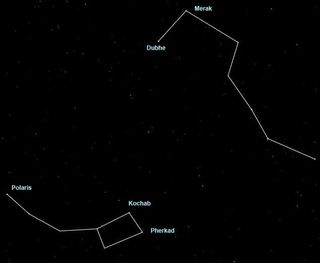
The relative positions of the stars, including the North Star, have changed quite a lot in the last 3,500 years of voyaging, but stars like Polaris guided Polynesian people in canoes from Canada to Japan. To this day, navigators like Nainoa Thompson of the Polynesian Voyaging Society use Polaris, known in Hawaiian as Hokupa'a or "fixed star," to make voyages across the Pacific.
Explorers and colonizers like Christopher Columbus also used Polaris to navigate across oceans, to varying degrees of success.
And according to NASA, the Apollo astronauts used Polaris as one of 37 stars they could use to orient themselves and navigate on the moon.
What does the North Star symbolize?
Appearing fixed in the night sky, Polaris' reliability is a potent symbol and metaphor across northern hemisphere cultures.
According to Sky and Telescope, Norse mythology holds Polaris to be the end of a spike around which the sky rotates, while in Mongolian legend the star is a peg that holds the world together.
The coat of arms of Nunavut, Canada, features Niqirtsuituq, the Inuktitut name for the North Star. According to the Legislative Assembly of Nunavut, the star is included to symbolize constancy as "unchanged as the leadership of the elders in the community."
In 2008, NASA beamed the Beatles song "Across the Universe" to the North Star, in honor of several anniversaries — the 50th anniversary of NASA's founding, the 50th anniversary of the launch of Explorer 1 (the first U.S. satellite), the 45th anniversary of the establishment of the Deep Space Network (which receives signals from deep-space probes such as Voyager) and the 40th anniversary of the recording of the song itself.
In Shakespeare's "Julius Caesar," the title character proclaims, "But I am constant as the Northern Star, of whose true fixed and resting quality there is no fellow in the firmament." Ironically, although Shakespeare's Caesar meant to imply that he was unshakeable, at the time of Caesar's assassination in 44 B.C. Polaris would have moved across the sky. Until relatively recently, Polaris wasn't the North Star at all.
What's the next North Star?
Caesar wouldn't have used the North Star to navigate, because thousands of years ago Polaris wasn't aligned with Earth's rotational axis. It would have moved throughout the night, just like any other star in the night sky.
Our spinning earth is subject to torque, like a spinning top, that is caused by the gravitational forces of the sun and moon. As a result the earth's axis wobbles, a phenomenon called precession, wrote physicist David Stern for NASA. The wobble causes Earth's axis to describe a circle in the sky.
Related: As the world turns: Night sky photographer snaps Earth's precession
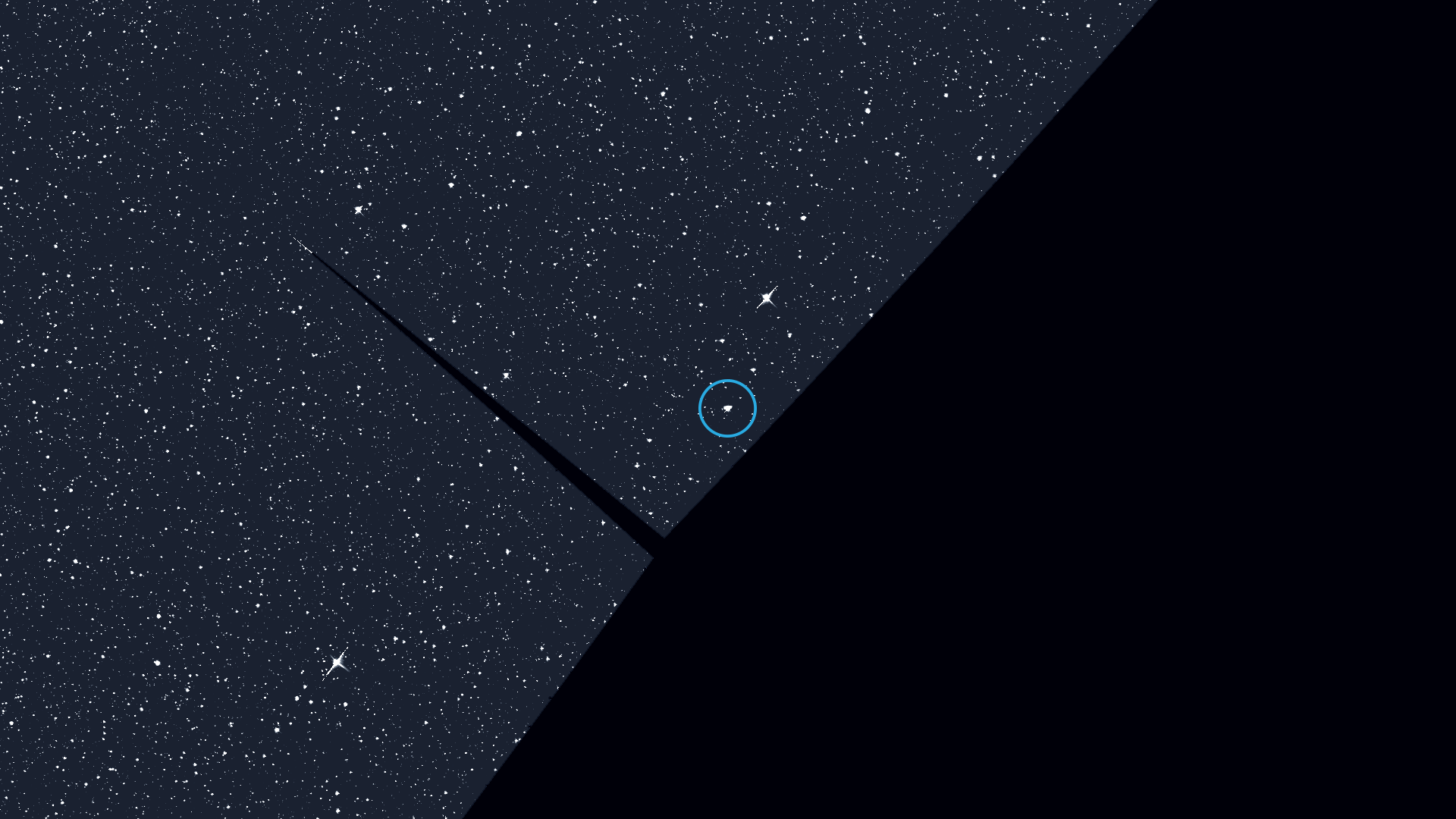
So, as the centuries go by, the North Celestial Pole shifts.
Since it takes about 25,800 years for the Earth's axis to complete a single wobble, different stars have become the North Star at different times. For example, the star Thuban in the constellation of Draco was the North Star around the year 2600 B.C., during the age of the Pyramid builders of ancient Egypt. The star Kochab was the closest to a North Star at the time of Plato, around 400 B.C. Polaris took over sometime before the 5th century, when the Macedonian writer and historian Stobaeus described it as "always visible," according to Space.com sister site Space Answers.
Polaris is actually still drawing closer to the pole and will be at its steadiest on March 24, 2100. On this day, it will be just 27.15 arcminutes, or slightly less than the moon's apparent diameter, away from the North Celestial Pole.
By around the year 14,000 A.D., according to NASA, Earth's axis will point reasonably close to the star Vega, one of the brightest stars in the sky.
Additional resources and reading
For more information on Indigenous traditional constellations and navigation, check out this work from Science Friday on how the lost constellations of Indigenous North Americans can connect culture, science, and inspire the next generation of scientists. For a kid's look at Polaris and stargazing in general, visit the American Museum of Natural History's Ology site. And if you want a practical how-to guide on navigating with the stars, try David Burch's "Celestial Navigation: A Complete Home Study Course, Second Edition" (2015).
Additional reporting by Joe Rao, Space.com columnist, and Elizabeth Howell, Space.com contributor.
Bibliography
- Argyle, Bob, Mike Swan, and Andrew James. An Anthology of Visual Double Stars. 1st edition. Cambridge ; New York, NY: Cambridge University Press, 2019.
- Dyches, Preston. "What Is the North Star and How Do You Find It?" NASA Solar System Exploration, July 28, 2021. https://solarsystem.nasa.gov/news/1944/what-is-the-north-star-and-how-do-you-find-it.
- Guedes, Carla Bento, and Duane W. Hamacher. "How Far They'll Go: Moana Shows the Power of Polynesian Celestial Navigation." The Conversation, February 14, 2017. http://theconversation.com/how-far-theyll-go-moana-shows-the-power-of-polynesian-celestial-navigation-72375.
- Hōkūleʻa. "Hawaiian Star Lines." Polynesian Voyaging Society. Accessed January 18, 2022. http://www.hokulea.com/education-at-sea/polynesian-navigation/polynesian-non-instrument-wayfinding/hawaiian-star-lines/.
- Johnson, Daniel. "Meet Polaris, the North Star." Sky & Telescope (blog), April 19, 2018. https://skyandtelescope.org/astronomy-news/meet-polaris-the-north-star/.
- Kaler, Jim. "Polaris." STARS. University of Illinois, 2019. http://stars.astro.illinois.edu/sow/polaris.html.
- Neilson, Hilding R., and Haley Blinn. "The Curious Case of the North Star: The Continuing Tension between Evolution Models and Measurements of Polaris." ArXiv:2003.02326 [Astro-Ph], March 21, 2020. http://arxiv.org/abs/2003.02326.
- Stern, David P. "Precession." Stargaze, October 10, 2016. https://pwg.gsfc.nasa.gov/stargaze/Sprecess.htm.
- "The Coat of Arms of Nunavut." Legislative Assembly of Nunavut. Accessed January 18, 2022. https://assembly.nu.ca/about-legislative-assembly/coat-arms-nunavut.
Join our Space Forums to keep talking space on the latest missions, night sky and more! And if you have a news tip, correction or comment, let us know at: community@space.com.
Get the Space.com Newsletter
Breaking space news, the latest updates on rocket launches, skywatching events and more!

Vicky Stein is a science writer based in California. She has a bachelor's degree in ecology and evolutionary biology from Dartmouth College and a graduate certificate in science writing from the University of California, Santa Cruz (2018). Afterwards, she worked as a news assistant for PBS NewsHour, and now works as a freelancer covering anything from asteroids to zebras. Follow her most recent work (and most recent pictures of nudibranchs) on Twitter.




